Fashion Photography 101 | Learn Concrete Tips Here
Rent film gear from local filmmakers.

Rent film gear from local filmmakers.
Go in-depth with:
Thinking of a career in fashion photography? Maybe you're drawn by the thought of shooting beautiful models on exotic beaches or travelling to secluded places every time a new collection from Kate Spade arrives.
The life of a fashion photographer doesn't sound too bad. However, getting there might not be as smooth as the waves you're planning to catch on those exotic beaches.
The battle of becoming the next Mario Testino is fierce. So, we're here to aid you with the best tips on what you need to know about fashion photography and how you can get started doing it.
Fashion Photography:
Complete Guide by James Nader
Interested in Fashion Photography? Check out this Masterclass with James Nader and get the best fashion photography tips from an expert!
Trailer
vaiZveQV_fc
Intro
1
8MRMAUl_dRY
What is fashion photography?
72
Lookbook
105
Advertising
146
Editorial
194
Camera settings
261
Planning the shoot
356
Selecting the model
444
Choosing the location
521
Lighting
621
Workflow
750
The journey
870
Shooting styles
933
Skills needed
956
Inspiration
1270
Camera equipment
1336
Current & future work
2211
Wrap up
1297
Meet James
wd1nbSQp584
What you’ll learn
Importance of moodboards: Create a mood board for every project to work from, with the whole team on the day.
Simplicity: It’s ok to keep things simple and shoot with one light. Get great with this and then add another.
The skillset: To have tenacity and patience, be creative and organised, develop attention to detail.
The skillset: To have tenacity and patience, be creative and organised, develop attention to detail.
To find inspiration: To not be shy and get inspired by other people’s work (but not to copy!).
What is fashion photography?
Fashion photographs are for showcasing clothing and other fashion items in the best possible way. You'll often see fashion photographers showing fashion items in an exotic location, on models in all kinds of flying-super-kids poses – all in the name of communicating the brand story and promoting the goods.
Everyone can join in fashion photography, from your granddad rocking his lederhosen to Heidi Klum (potentially also wearing lederhosen). All that is fashion photos too.
Fashion photography blurs heavily with various photography genres, such as product, portrait, even fine art. It's a unique and diverse photography genre that keeps evolving as photographers find and manifest their aesthetic.
Different styles of fashion photography
Because fashion photography isn't limited to one type of genre or photography look, it can be helpful to divide the fashion genre into different kinds.
Here are some of the biggest and most common ones.
Editorial Fashion Photography
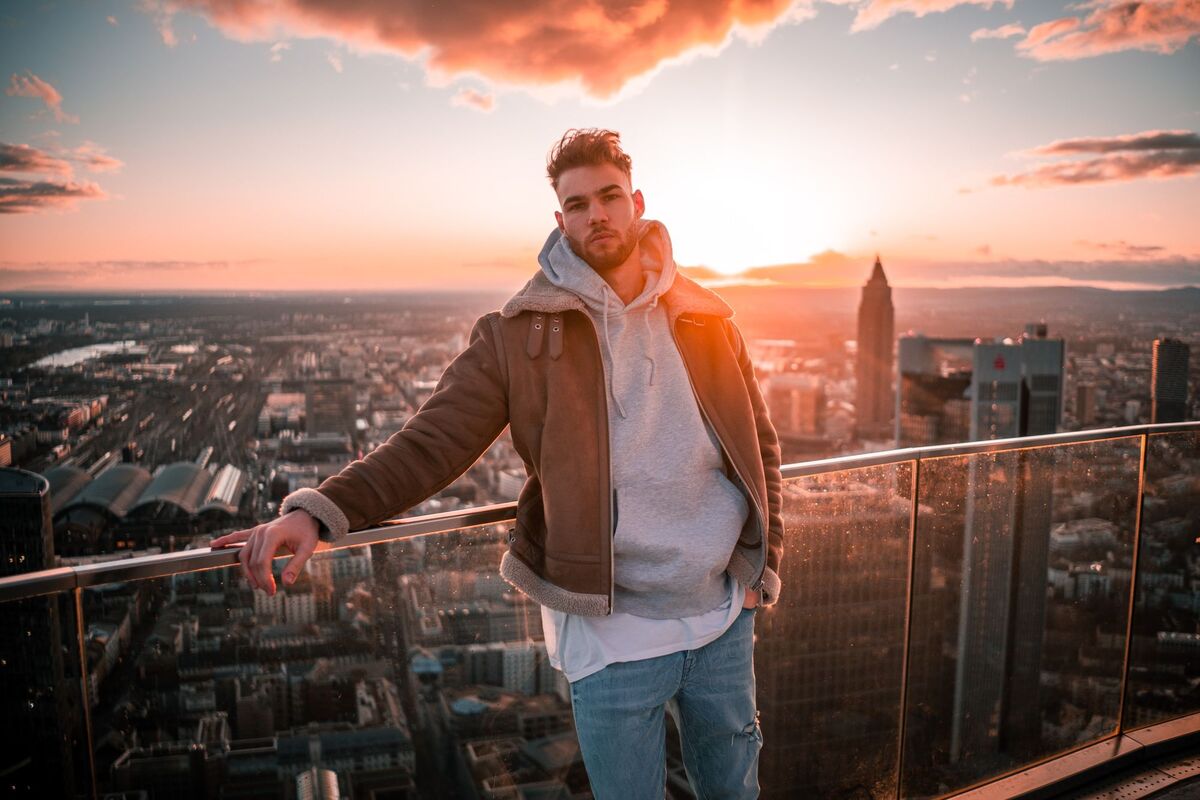
Editorial fashion photography can be similar to lifestyle photography and will often include aspirational content. This type of photography can convey a message about a product or a brand, provide a narrative, or illustrate a current trend in the industry.
In other words, editorial fashion photographs look at the model in an environment other than at a studio. It's about showcasing a lifestyle – where styling is everything.
High Fashion Photography
You'll most often find this type of photography on single-page magazine advertisings, billboard campaigns, high-end books – perhaps even a fine-art exhibition.
Their primary purpose?
Grab the attention of the viewer! High fashion shoots will generally be highly stylized, with avant-garde poses and over the top outfits.
It's also the type of photography where you can kiss reality goodbye and get as wild and freaky as you'd like. Because with high fashion photography, you're not just selling a fashion item; you're selling the creative vision that fashion shoot brings.
Catalogue Photos
Catalogue photographs are all about shooting ordinary people in fashion items. The purpose of these types of fashion shoots is to show the clothing neutrally. Meaning, these shots are usually shot in a studio with a neutral background, so there's nothing that distracts the viewers from what they should notice – the clothing! A catalogue fashion shoot is about showing the fashion items clearly and attractively so the viewers can get a sense of how they look and fit before they buy.
Street Fashion Photography
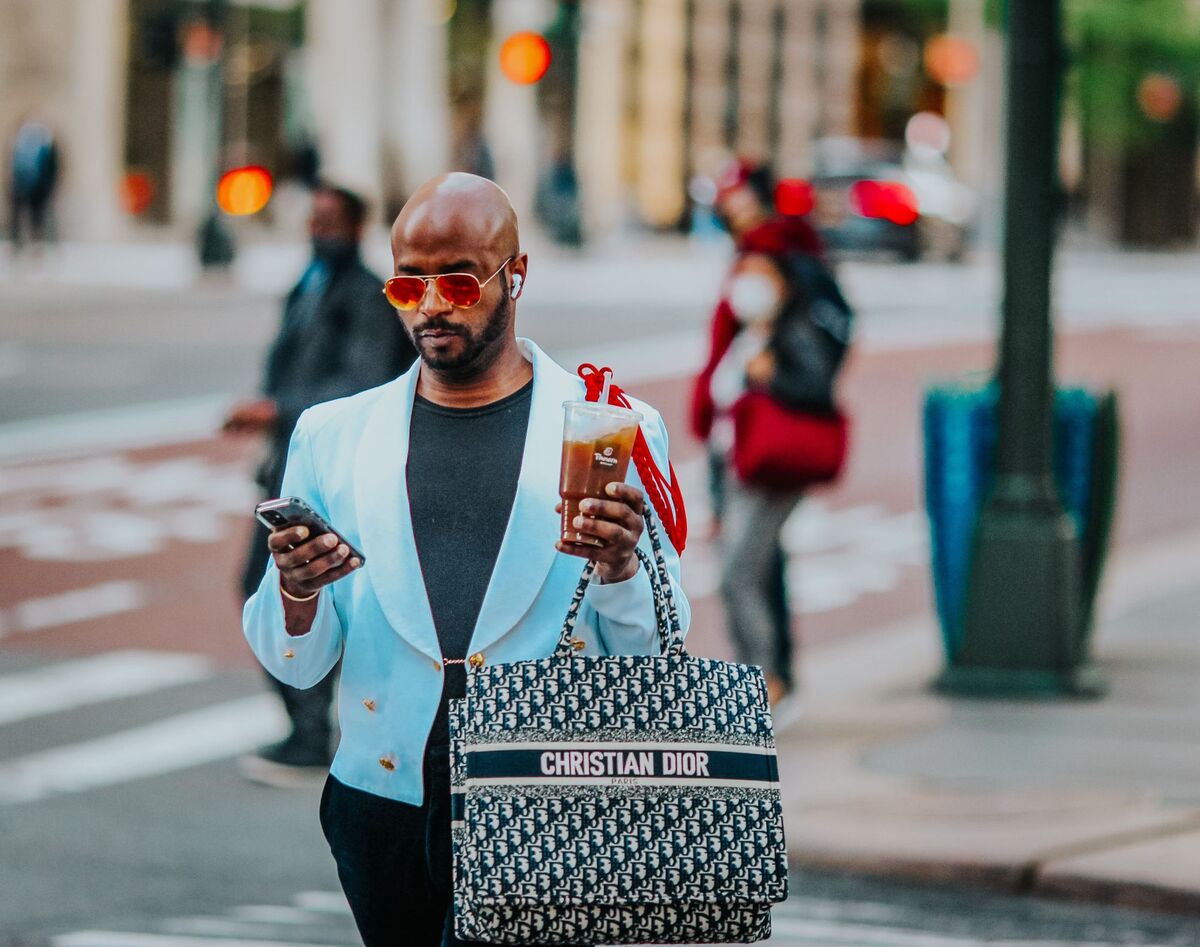
This type of fashion photography is gaining more and more popularity, and no doubt you've seen these types of images on Instagram and other social media channels. Street style photos are shot on location in everyday environments. They're all about the real world; what are people wearing and how are they styling it – that's what you're showing. In these shoots, the model blends in with those around them. They're in their natural element instead of a stylized and perfect world.
Camera equipment used for fashion photography
Like any other photo shoot, there will be a lot of equipment that's nice to have, including fashion photography. The important part is that you keep it simple and fitting to your level of experience.
Rumour has it that the best way to start shooting fashion is to shoot with one camera, one lens, and one light.
Why so simple?
In any type of photography, starting with a simple equipment setup will help you learn the ropes fast. Once you've built up your style and know what you're going for, you can easily add the equipment you need. Especially in the world of fashion, as this is one of the most variable types of photography. Get your complete overview of the equipment you need for fashion photography.
Correct settings

Magic camera settings that will make the perfect fashion photographs for you – (however lovely it would be) doesn't exist. Luckily, there does exist a camera setting that'll meet you at least halfway.
Overall, you should always shoot in RAW. Shooting in RAW will store more photographic data in the image and gives you more 'play' in post-processing.
If you're doing a basic studio shoot, where everything needs to be sharp, and in focus, you can try these settings and then adjust from there:
- Aperture: 7.1 or 8
- Shutter speed: around 160
- ISO: 160 to 200
Shooting Mode
The very first thing you have to do – get out of Auto mode. For fashion photography, you want to be in full Manual mode to give you more control and provide more consistency to your shots.
Shutter Speed
Depending on your lighting, you'll need different shutter speeds.
However, generally speaking, you want to use a shutter speed faster than 1/100th to avoid any hand-shake. If you're using flash, however, you shouldn't go faster than 1/200th of a second.
Are you planning to catch some motion? In that case, the ideal shutter speed for your fashion photography will depend on how fast the action being photographed is.
Aperture
You need to control the aperture to make sure you have an excellent shallow depth of field. Having a shallow depth of field directs the viewers' attention to the focal point as everything else blurs.
While you're shooting, keep in mind that you need to check your focus to make sure it's on your subject. The aperture will be determined automatically by your camera.
ISO
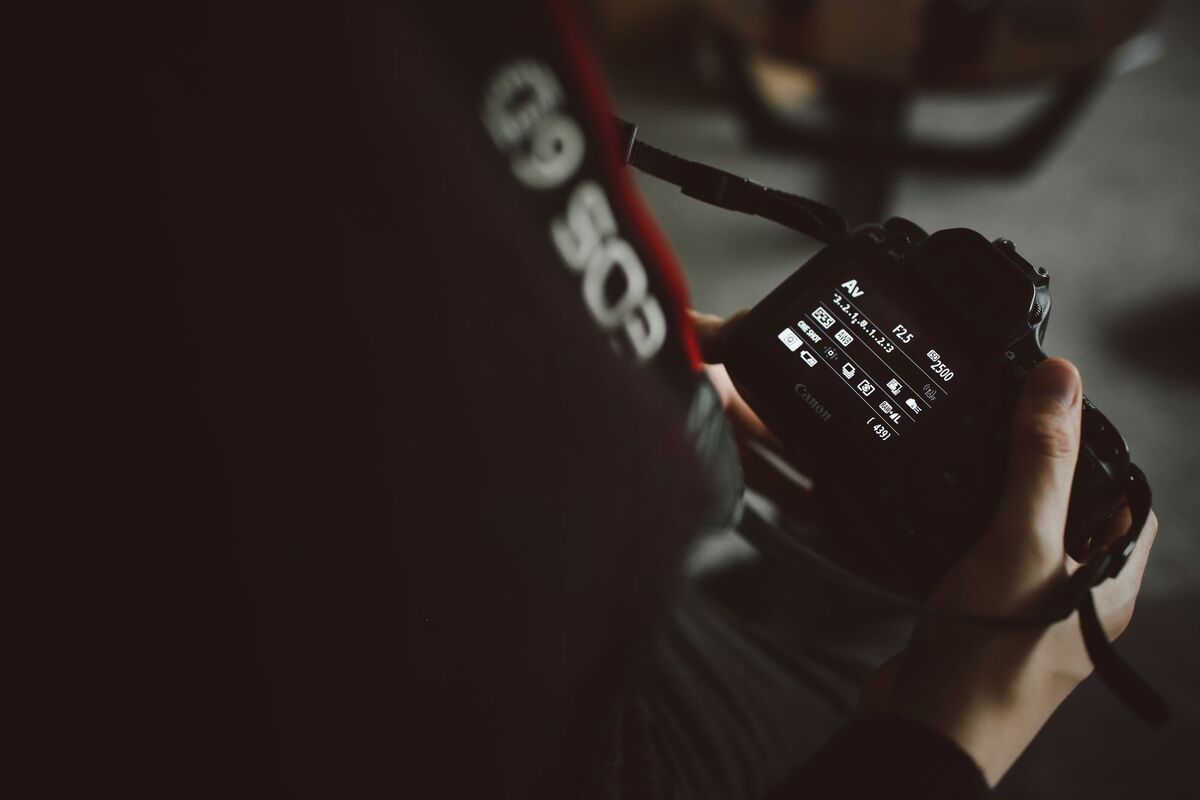
If you aim for a higher ISO, you will be more light-sensitive and increase grain appearance. In contrast, a lower ISO will have less of both. That means, to avoid the appearance of grain, set your ISO as low as possible – preferably somewhere between 100 or 200. You can push the ISO higher if the light is low. Keep in mind, though, that different cameras will handle grain differently. An ISO of 800 in one camera may look clear, while at another camera, an ISO at 800 may be very grainy.
As you get more experienced, you don't have to follow these strict guidelines – you can always experiment with your camera settings in a way that fits your shooting needs.
6 Tips to get started with fashion photography
The fashion industry is one of those industries where you need a lot of skill and sass. It's a challenging industry to get into. So, we've listed some of the essentials you need to consider when starting as a fashion photographer.
1. Prep stage
Familiar with the phrase, "By failing to prepare, you are preparing to fail" or maybe "Give me six hours to chop down a tree, and I will spend the first four sharpening the axe."? I could keep going, but when some of the greats (yes, I do classify Abraham Lincoln and Benjamin Franklin as the greats, excuse me) emphasize the importance of preparation – you ought to listen. And when it comes to fashion photography, I'd say they hit the nail.
Being too prepared is not a thing. You need to prepare everything from camera equipment and settings to outfits and location. Before your shoot starts, try to imagine each phase of your fashion shoot and think about what you'll need for each stage.
Something that'll help you – a mood board (in filmmaking terms, you might know it as a storyboard). Then start assembling your team, which entails models, stylists, hair and makeup artists, assistants, etc. Work out the necessary agreements and release forms and scout for a location that fits your concept.
2. Choose your model
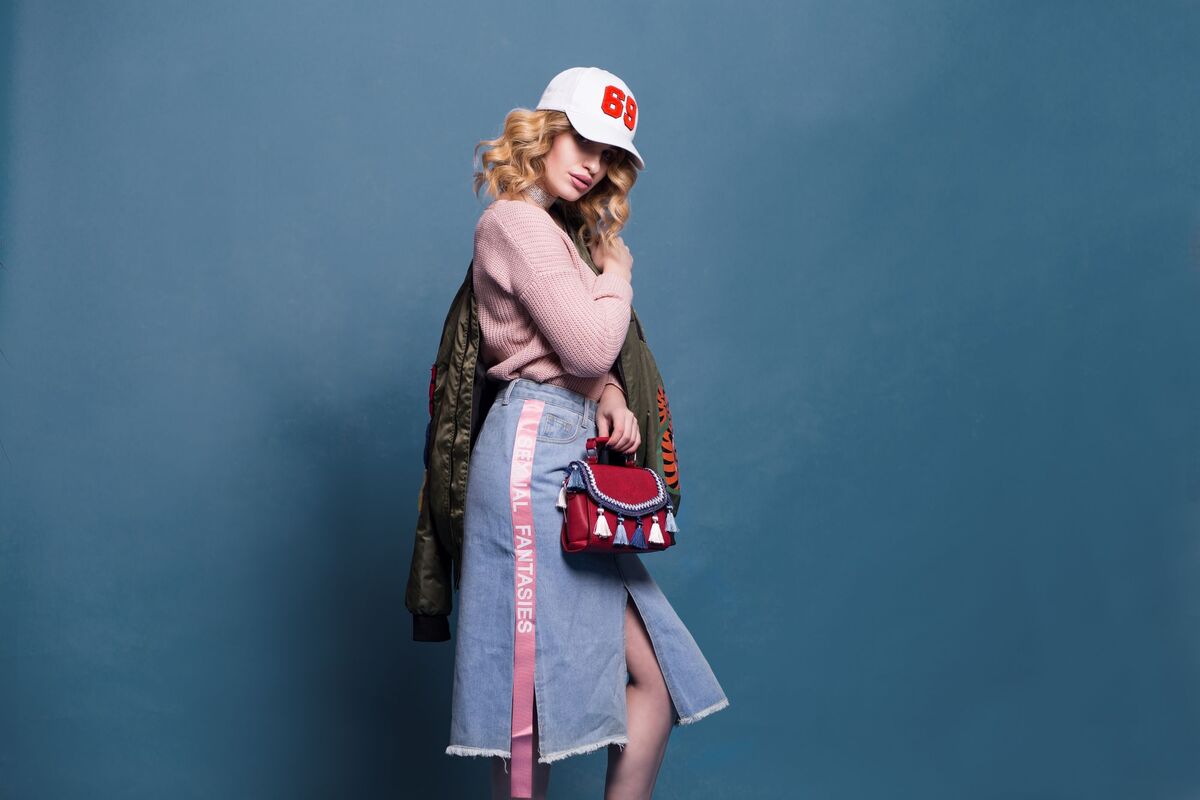
The thought of working with models can seem, well, terrifying, but you have to get used to it. As a fashion photographer, it's part of your job. You know the expression "just imagine them in their underwear", well, lucky for you – most of the time, the models are actually in their underwear, so that'll make it easier. I'm kidding, of course! But models are just doing a job – same as you, and they might be just as nervous as you (they are the ones in underwear, after all). So, make sure to give positive and constructive feedback and show the model your work, so he/she knows what's going on and how it looks. Also – always be mindful; in some ways it's your colleague, so be respectful and never touch the model without permission.
Finding your fashion models
There are a few ways you can find potential models for your fashion shoot. Here among, an online agency or by starting as an assistant to a fashion photographer. You could also look for models in online advertisements also Facebook and Instagram are great platforms for this.
3. Try on different angles
Don't limit yourself to only doing eye-level angles. Explore your environment and try different angles from which you can photograph your model. Just remember the mood you're trying to convey, as different camera angles will convey different moods. Each angle has its pros and cons, so think about their effect on your viewers.
If you're not sure about all the different camera angles and what they can do for your image, discover our guide on 50+ camera angles.
Experiment with poses
Fashion photography separates from any other genre due to one main factor – you're showcasing fashion, not the model!
That means you should always think about how you can emphasize the fashion items in your images. So, when you pose your subject, make sure not to obstruct the details of the outfit. It's your job as the photographer to make sure the viewers see the product's selling point.
Use the outfits actively
As your fashion pictures will be static, showing the outfits in their proper form can be challenging. Without any movement, the outfit can look a bit stiff – which is not always a great look.
Think about creating movement in the fabric as much as possible. That could, for example, letting the model run around – so the material flows in the air.
Use props to create a theme
Props can often help create a coherent theme in your fashion shoot and works well for providing some context and adding dimension to your composition. Props are also handy if nothing significant is happening in the frame to make it look more attractive.
4. Background & location

When doing fashion photographs, you should always be mindful of the background. It plays an essential role in your composition.
Imagine you're showcasing Juicy Couture's new pink tracksuit, choosing a pink background – not necessarily the best idea, as that will hide the clothing more than it will highlight it (see a big difference between hide and hight). The background should also help guide the viewer's attention to the models (hint! People will naturally follow lines and curves).
Similarly, you can use squares and rectangles to frame your model. People will naturally be drawn to the model when you put your subject in a "box" (not literally).
Let the model interact with the environment
Rather than having your model stand around, get them to interact with their surroundings to create a more dynamic image. It will help make posing more natural and less awkward, as well as it can help create an exciting composition. If you ever find yourself in Rome around Piazza di Spagna, have your model sit on the stairs or lean against the handrail, as this will make them feel more relaxed and less posy. Of course, if you're in Birmingham somewhere – I'm sure there are some stairs you can use there as well.
Location vs studio
Location plays a significant role in the final product of your shoot. It might be a catalogue fashion shoot, in which case a studio might be perfect. However, suppose you want to experiment and be a bit more innovative. In that case, it's a good idea to find some exciting locations. Whether that's somewhere on an exotic island or a beautiful brick wall, both places are valid – it all depends on the atmosphere you're trying to create.
Remember, it's best to plan this. That way, you're not wasting time during shooting day, and you have an idea of the sort of photos you want to take.
5. Lighting

If there is one thing you need to know when getting into fashion photography – it's lighting. From harshly lit summer beaches to studio shoots with strobes and colour gels, fashion photographers must master lighting techniques.
Most fashion photographs use very high key lighting that minimizes shadows and contrasts. When low key images are used, the shadows must be carefully controlled to flatter the model and the clothing.
Some standard lighting techniques include:
- Split and Hero lighting
- Loop lighting
- Butterfly and Clamshell lighting
- Rim lighting
- Flash and Ambient light
Above listed lighting techniques is far from exhaustive but will, in many cases, be a good starting point. Explore many more lighting techniques in our guide on various lighting setups.
6. Composition & patterns
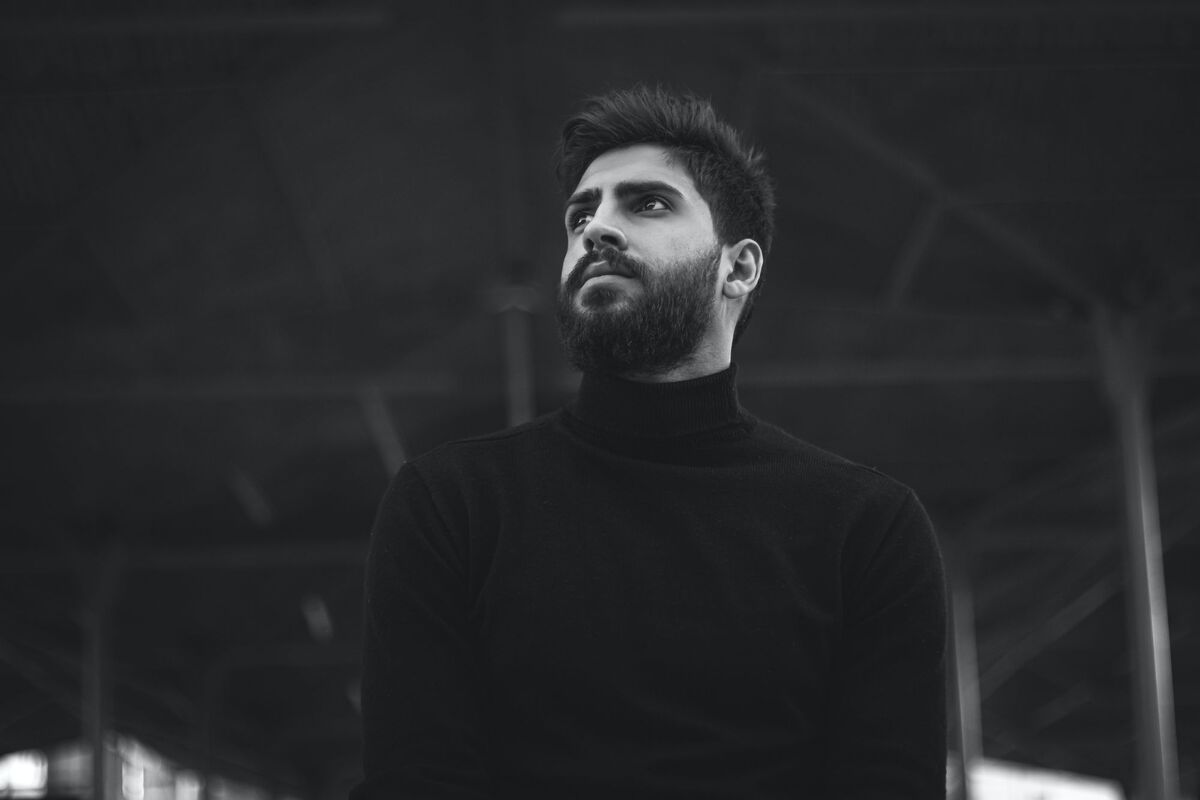
Suppose you've read this blog post carefully (collectively nodding*), you've read the word composition once or thrice about now – there's a reason for that. Composition is essential in any style or genre of photography. It allows the subjects and settings to look more exciting and professional than a shot taken randomly.
Composition is used to enhance the subject and guide the viewers' attention. To make it just a tad more manageable for you, here are some valuable tips to help you take well-composed magazine-worthy photographs.
The rule of thirds
You might have heard or even used this one before – it's a classic. Its purpose is to provide the photographer with a creative guide that can help them connect with the viewer.
It entails dividing your frame (mentally) into nine squares of equal sizes. To achieve a balanced composition, place the model in any of the points where the lines intersect. (Fashion hack; almost every camera has a grid-line function to assist you in composing your shots).
The rule of thirds is excellent if you're new in the fashion photography game and not sure where you should place your model.
Place the model in centrum

Placing your subject in the centre of the frame means leaving the rule of thirds and going r(v)ogue. Done correctly, and you have a perfect fashion portrait on your hands.
Since your main point of interest is already in the middle, the viewers will see it immediately. There is a downside to this, though. As you're now placing your subject in the middle, it can come off as rather dull and uninteresting. So if you go for this, try to implement some image hacks that can help it look less boring. Firstly, consider the background. Look for a location that has something you can use to balance your composition. Secondly, think about model poses. Have the model try different hand gestures, flip her or his hair around, be creative and look for poses that will make the image appear less rigid. You can also try to have the model look to one side, making the viewer think something is going on off-camera.
Create a Counterbalance
Sometimes you will find that placing the model in unusual places is required to create the fashion piece you want. If this happens, you can use a counterbalance to correct your composition. That involves using another component to create harmony and a sense of balance in the shot.
Keep a consistent theme
A good idea is to include a visual narrative in your fashion shoot. When you're browsing through a fashion magazine (and I mean any), you'll see a theme that connects the photo session. A cohesive theme will compel the viewers to look at every picture you show them. Remember, this is not a Jane Austen novel – there doesn't have to be an end nor a beginning, but there should be something that connects the shots.
When all this is said, you can use tons of tips and tricks to encourage tidy composition. For example, think about symmetric, the use of white space or consider throwing the viewers off-balance and ignore all symmetry rules and go for something asymmetrical.
Bonus! Extra (secret) tips
If you recall, I did start by stating that the fashion industry, not easy. So, to give you an idea of where and how to start, here are a few helpful (shh!) tips.
Networking
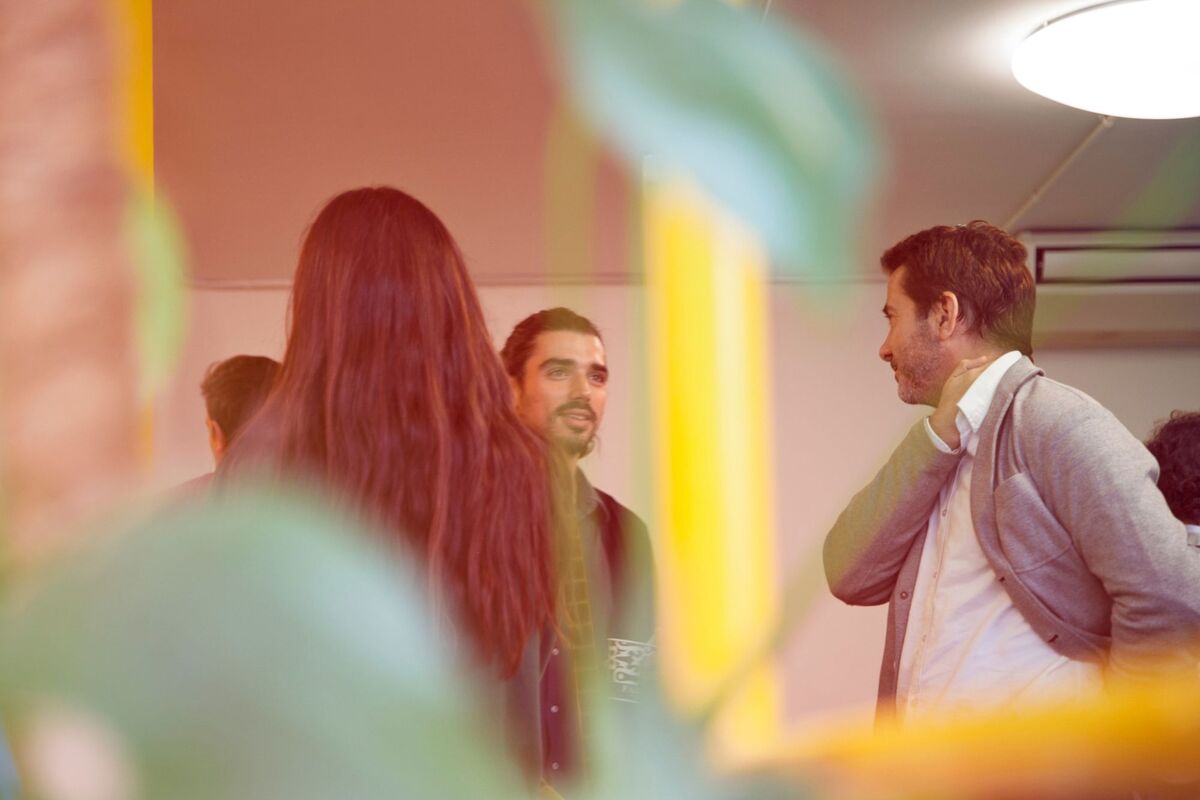
Probably not so secret. Networking is crucial in basically any industry that you want to break into. In the fashion industry, ever much so. Networking is the key to landing your dream job in fashion. For fashion photographers, that also means sharing your work on social media and keep yourself open-minded to any opportunity that happens to knock on your door. When you're working with a team, make sure to leave a good impression as these are often the first ones that'll introduce you to other creatives in the industry. Stay in touch with everyone you meet; they might just be the key to your future success.
Find yourself a team
If you want to work with models and do it stat – assembling a team is a good start. Models might get suspicious if you are on your own. Instead, try to collaborate with other like-minded fashion interested people such as hair and makeup artists. You'll seem more trustworthy, plus the whole process gets much more straightforward.
Sites such as Facebook and LinkedIn are both great places to find collaboration and team members.
Get releases
It might not sound so sexy, but it is essential. Things like licenses, permits, and copyright agreements are complicated things. Still, it's necessary that you're always covered, so you don't run into any troubles – this includes everything from model releases to designer contracts.
You'll often have to deal with the model release permit wherein the models state they've agreed to be photographed and then published. This doesn't only apply to models – it includes anything that shows in the frame and is subject to copyright.
If you're unsure – ask. It's always better to be on the safe side.
Renew your portfolio
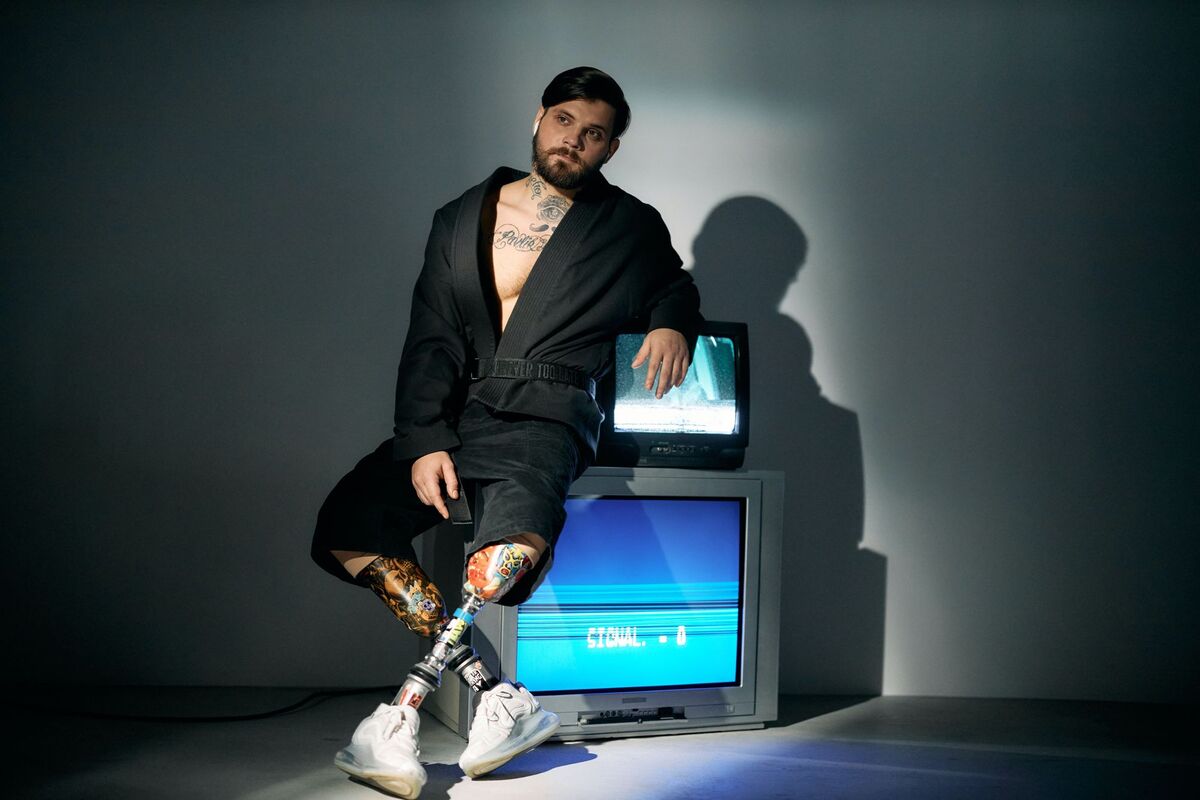
Having your portfolio renewed, not once in a while, often – is essential. A portfolio is how your client knows whether you're right for a job. Having an extensive portfolio with many adverse jobs tells them this is not your first rodeo and gives them the confidence needed to hire you for the job.
Your portfolio could, for example, be through your social media accounts as well as through your website. Keep your portfolio updated so clients won't look at outdated photos.
Also, make sure to keep a physical photography portfolio; this you can keep short and trendy – showcasing only your best work. Ask friends, family, people in the biz to help you decide which photos to include and which ones to discard.
Be a team player
Believe it or not, fashion photography – not a one-man show, more like the whole cast of "Annie"- could play a fashion photography team. That means you need to be able to work together with others. Working together with a whole team also means that some might not be ready when you are and vice versa. Although this can be frustrating, it's essential to keep in mind that making a fashion photograph a success is a team effort.
Learn to delegate, coordinate, and create a comfortable work environment. These are all elements that also influence the quality of the final picture.
Practice on friends
Building a portfolio can be challenging if you don't have any to photograph. Of course, models are the aim, but those can be difficult to get a hold of when you're starting. So, before you begin contacting models, stylists, and makeup artists, how about your friends?
Ask a few friends if they'd like to have their portraits taken or just help out a mate. Making mistakes is part of doing anything new – so why not do it around friends (who most likely already have seen you make a lot of mistakes).
Use social media to gain exposure
Creating a portfolio is one (crucial) thing to make sure people can see your work before they hire you. To hire you, however, they need to know you. An excellent way for getting your work out there for people to know who you are – social media. Especially Instagram is perfect for the fashion industry. If you post eye-catching images, modelling agencies might start noticing and thereby contacting you. Don't worry if it takes a while to get a large following; Instagram is flooded with fashion photographers, so it takes some time before you start gaining an Insta-worthy following. To get that following, you need to separate yourself from all the others – find your unique style and portray it so everyone knows when they're looking at some of your work.
Edit & post-processing your fashion photographs
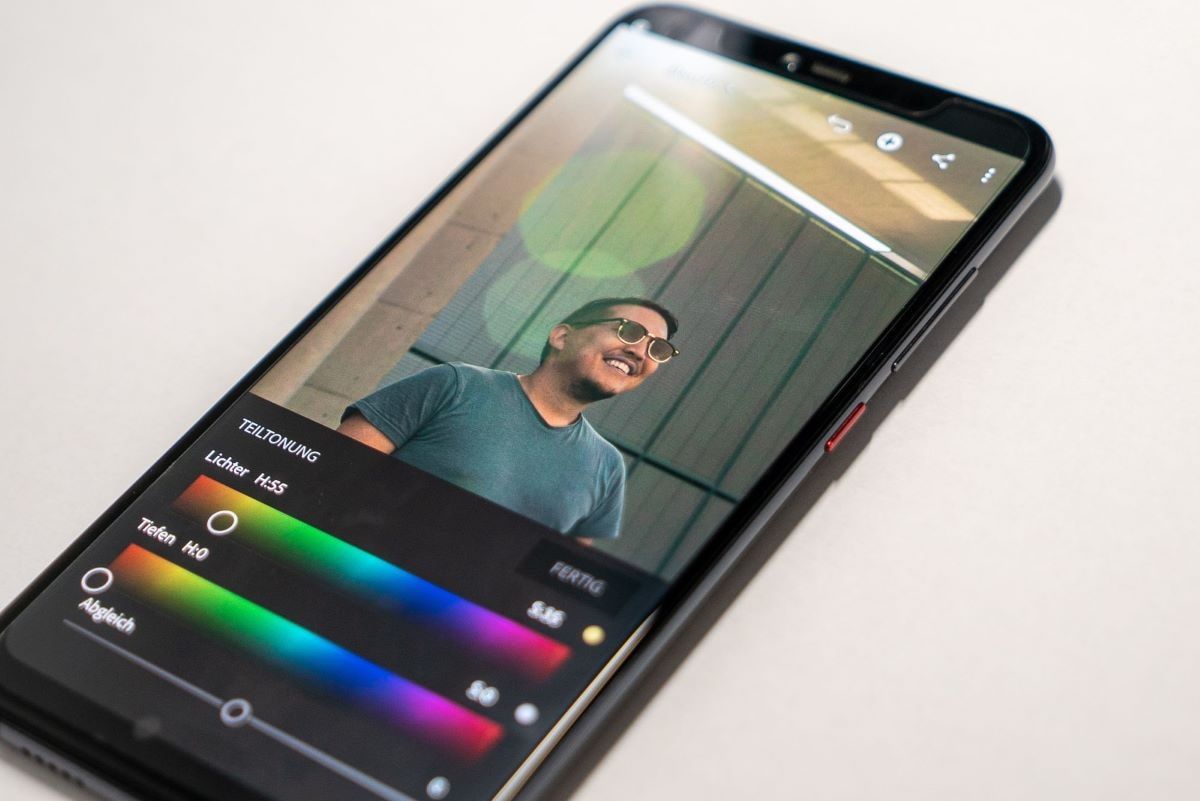
There's a reason Kylie Jenner uses so much time or retouching her photos – it's because it looks damn great. Be careful not to overlook how big a difference retouching and post-production in fashion photography can make to your final product. It might have a bad connotation, but it shouldn't. All images are retouched to some extent, the reason being that one's photos come to look so much better with a bit of retouching. Why not make sure that your pictures look as good as possible?
Adobe Lightroom, Photoshop and others editing programmes include multiple tools that'll allow you to do just about anything to make your photo look just as you'd like it.
What's next?
You might already be fully covered in the equipment apartment, or you might not. Learn which equipment to try for your next fashion shoot.
Or, if you want to learn more about photography, check our article on photography 101.
About the instructor
James Nader
Photographer
London, United Kingdom
James Nader’s photography represents work with many leading brands and campaigns both in the UK and Internationally, working with some of the best in the business such as Dita von Teese, Czech supermodel Petra Nemcova and Lord Bath the Queen's cousin.























